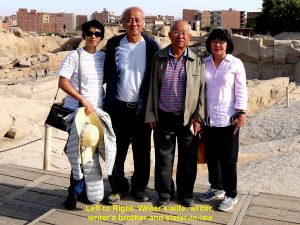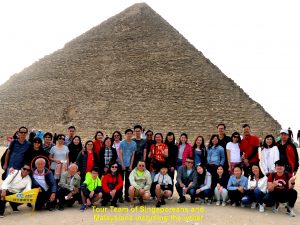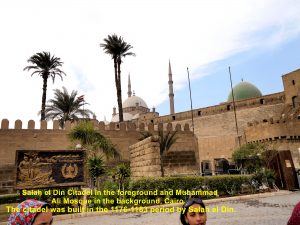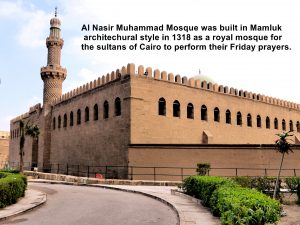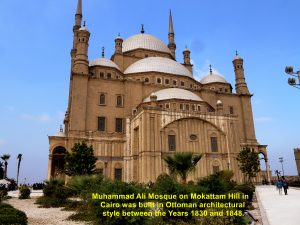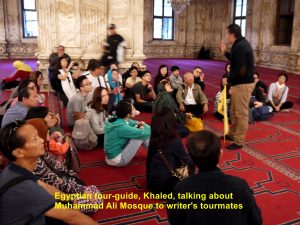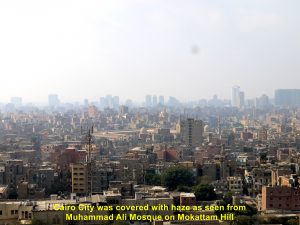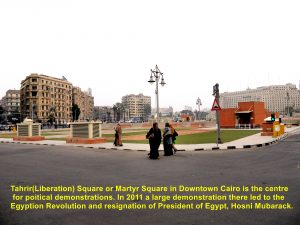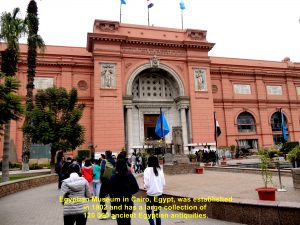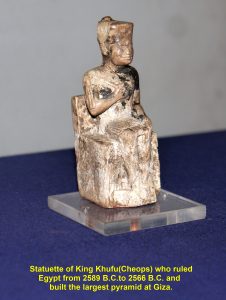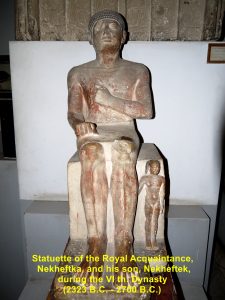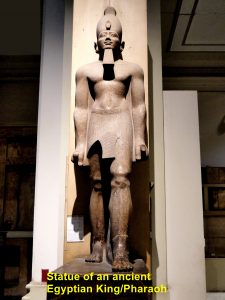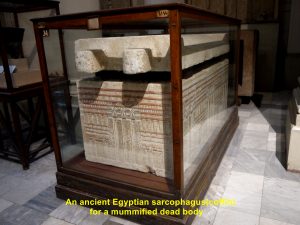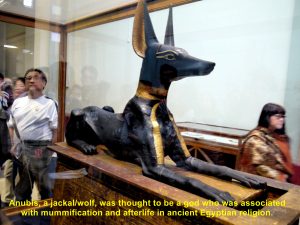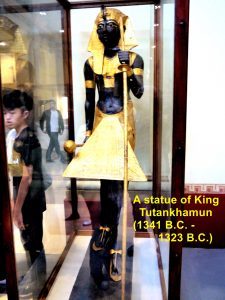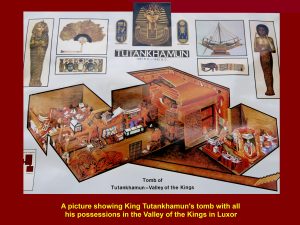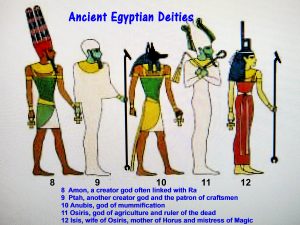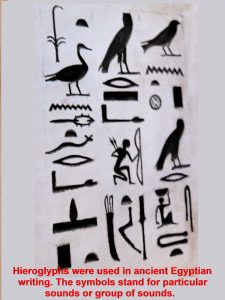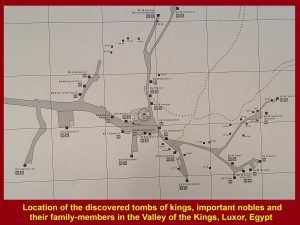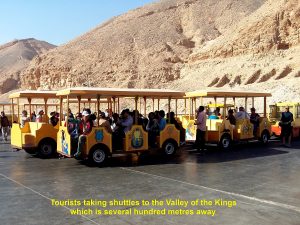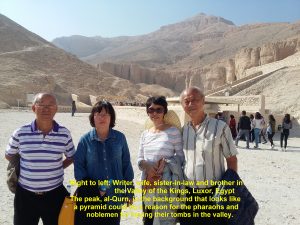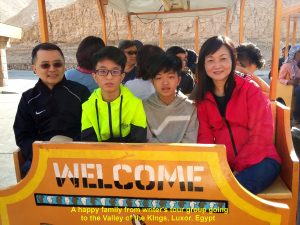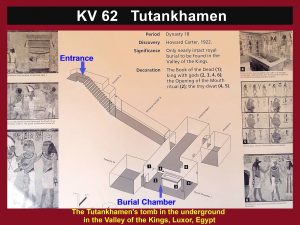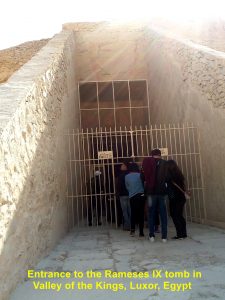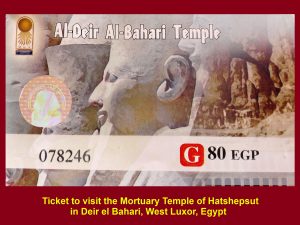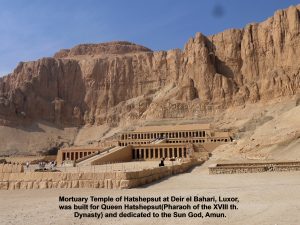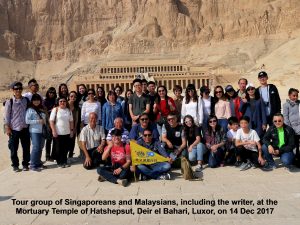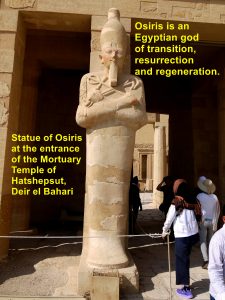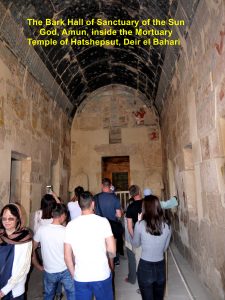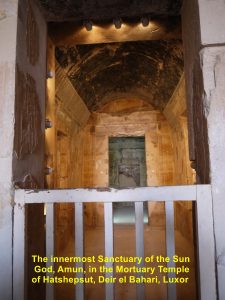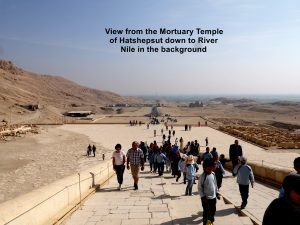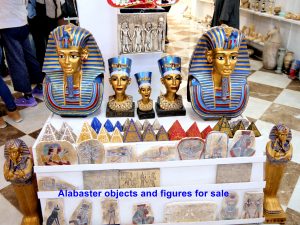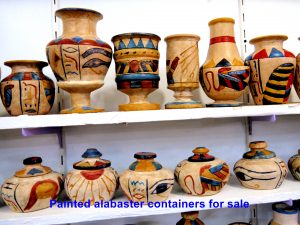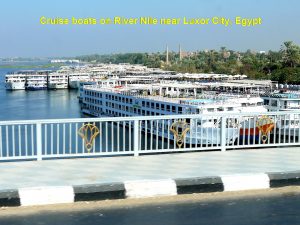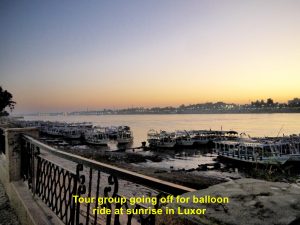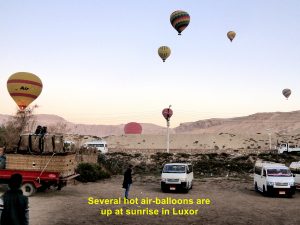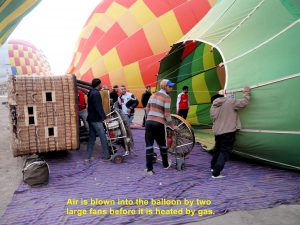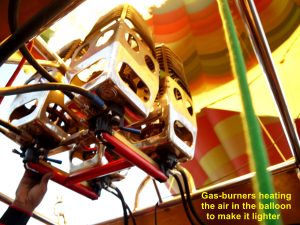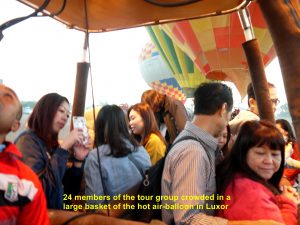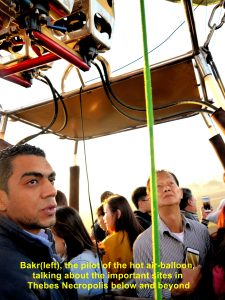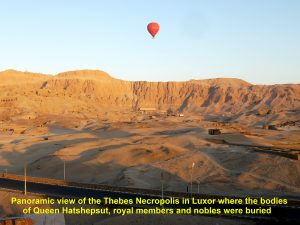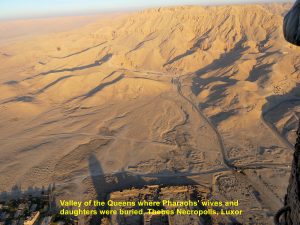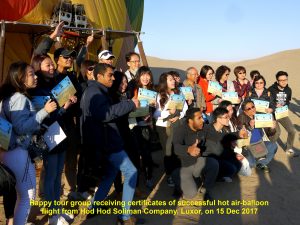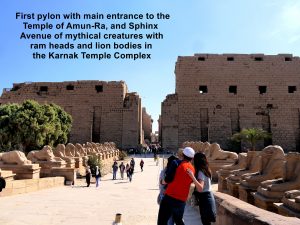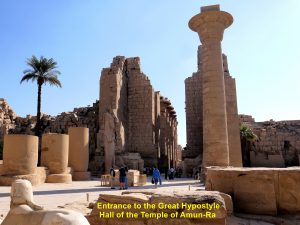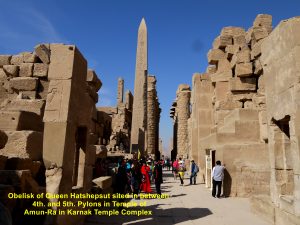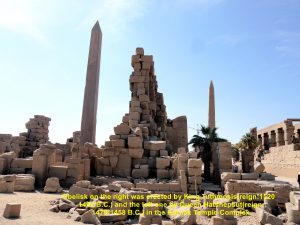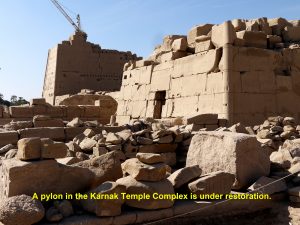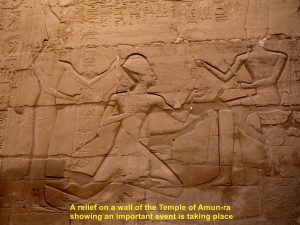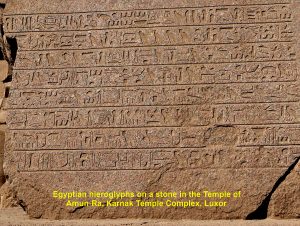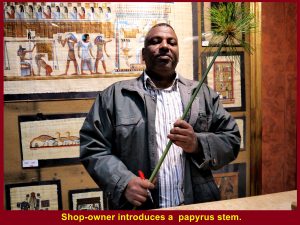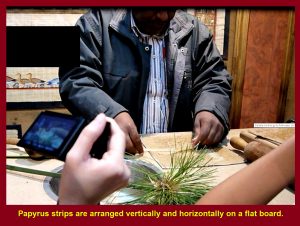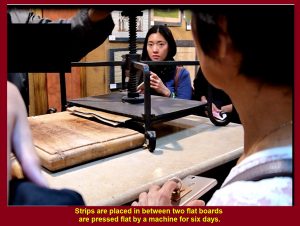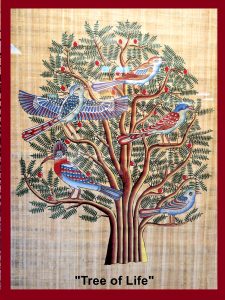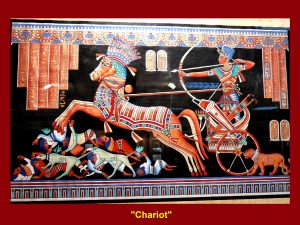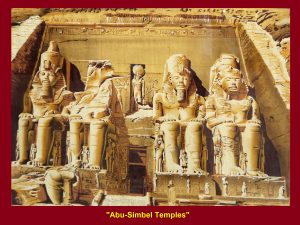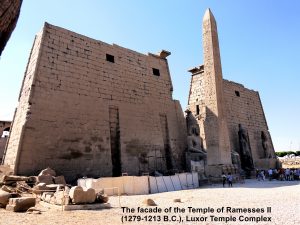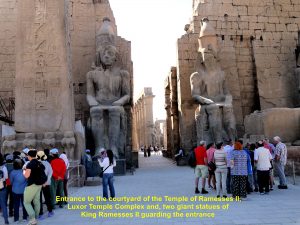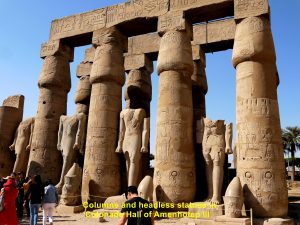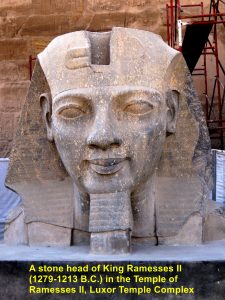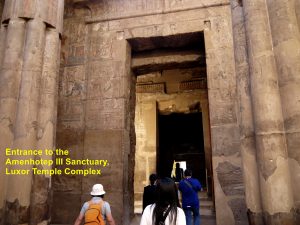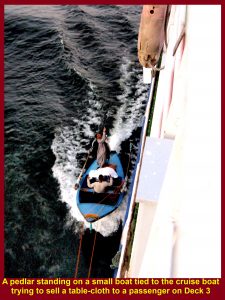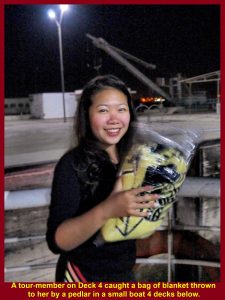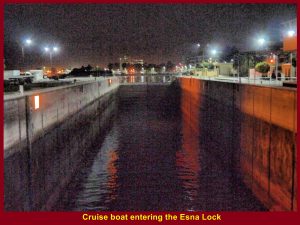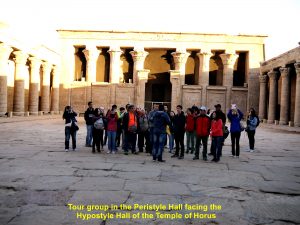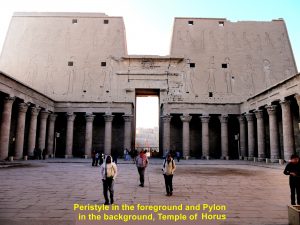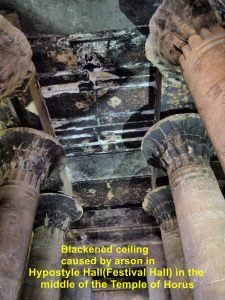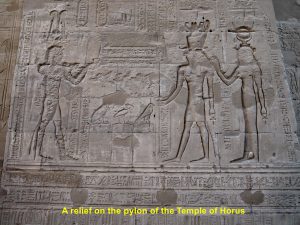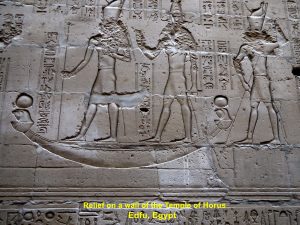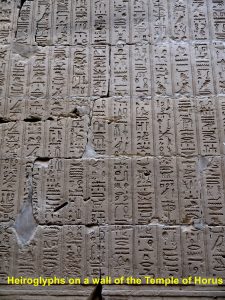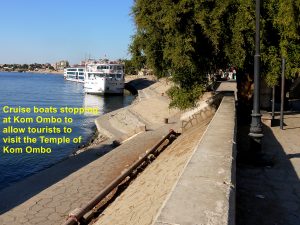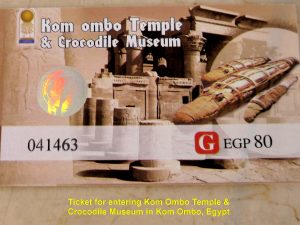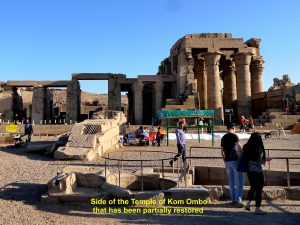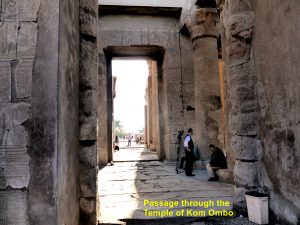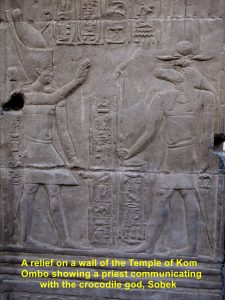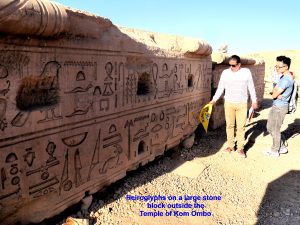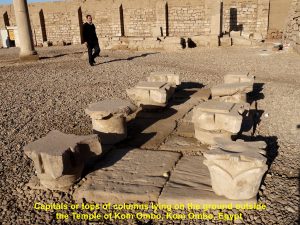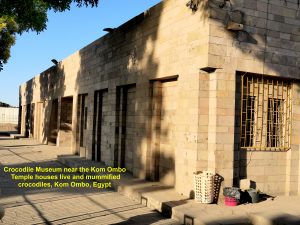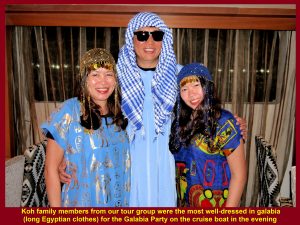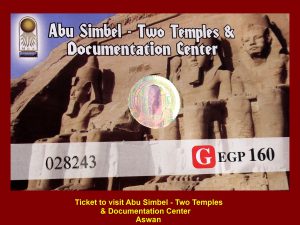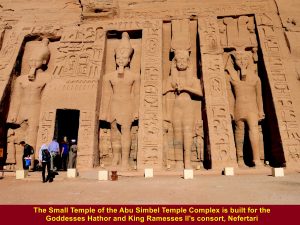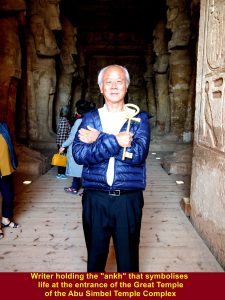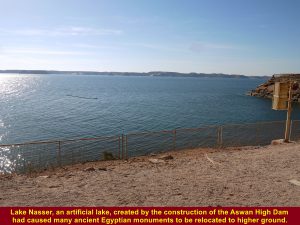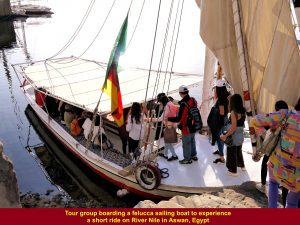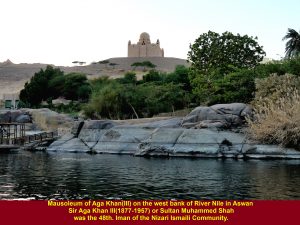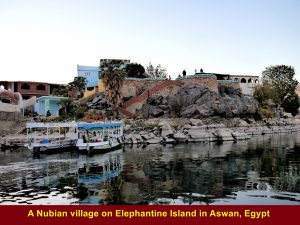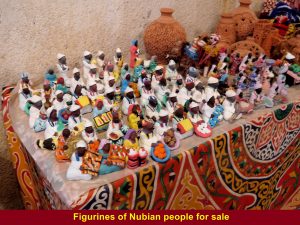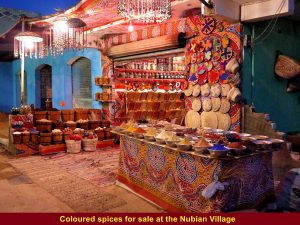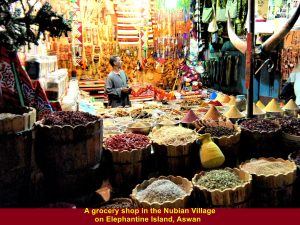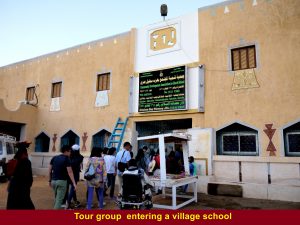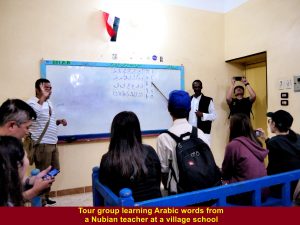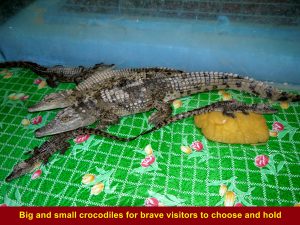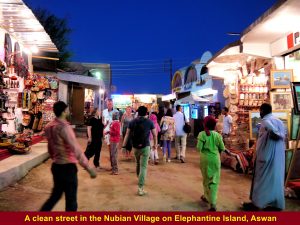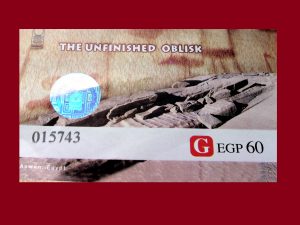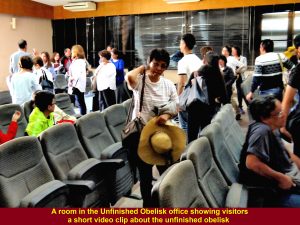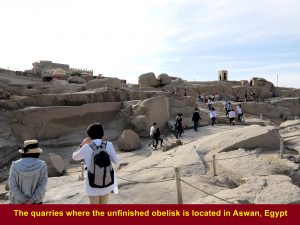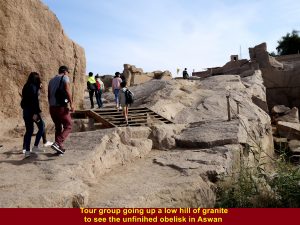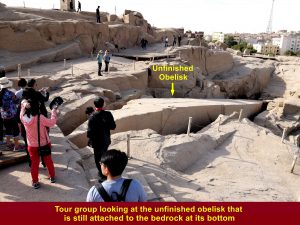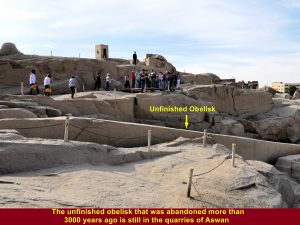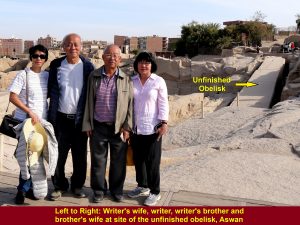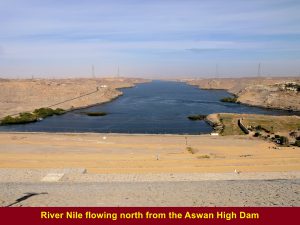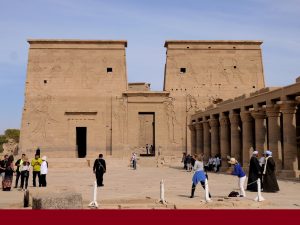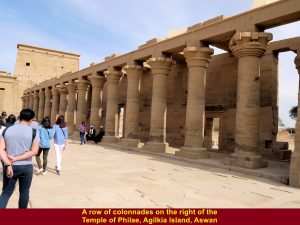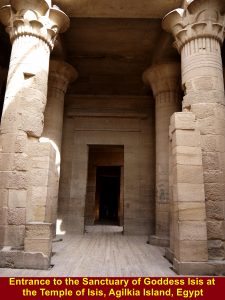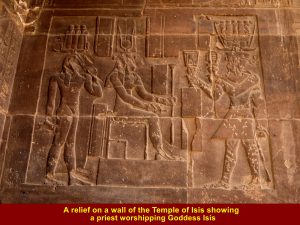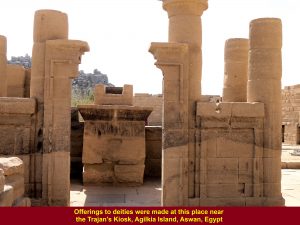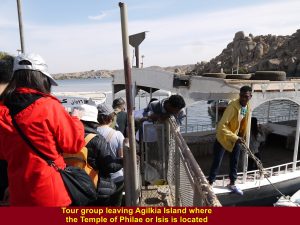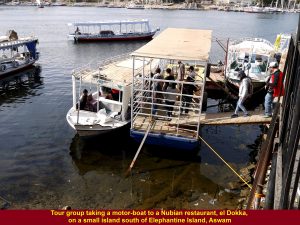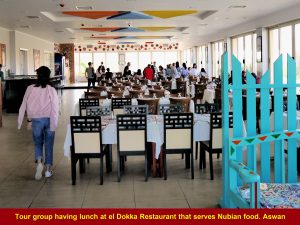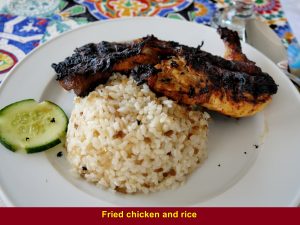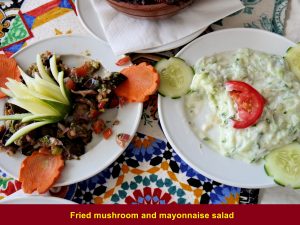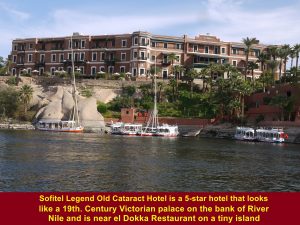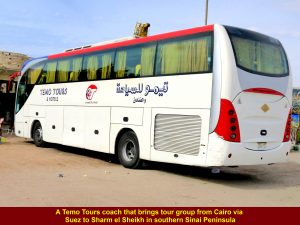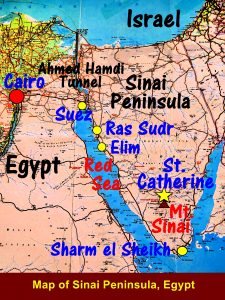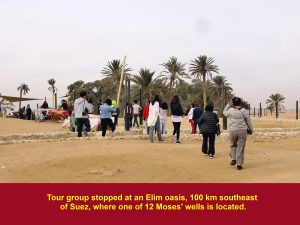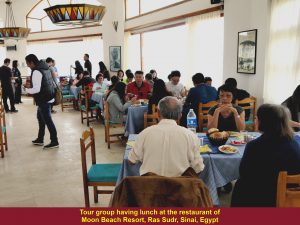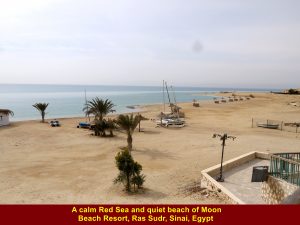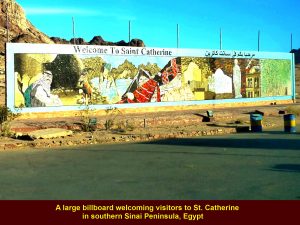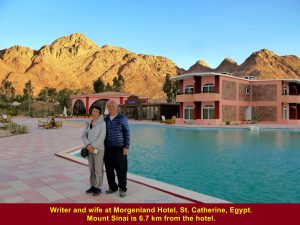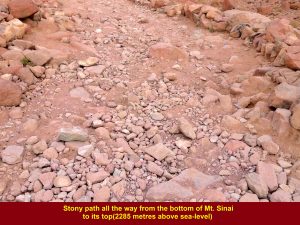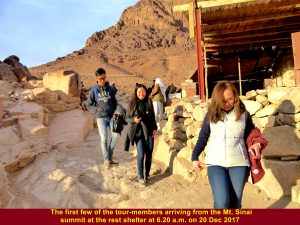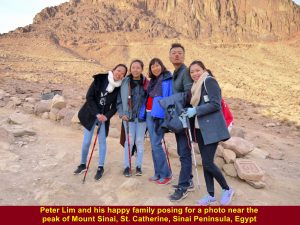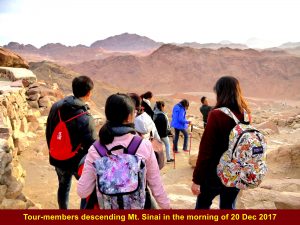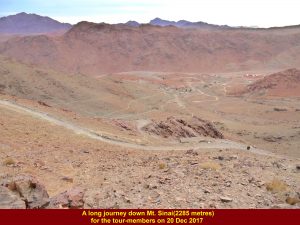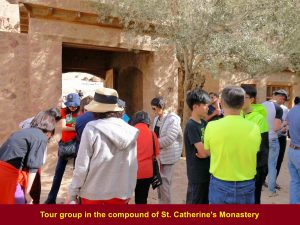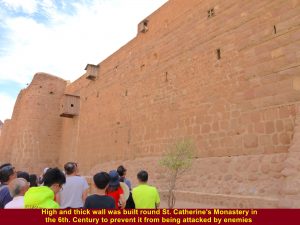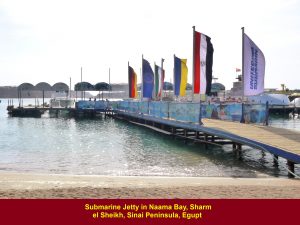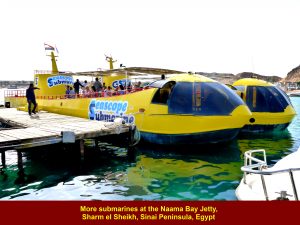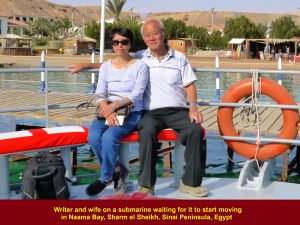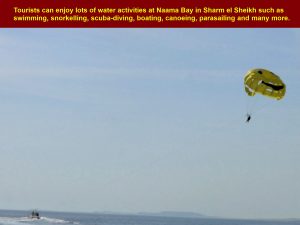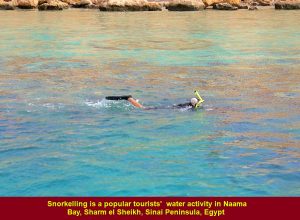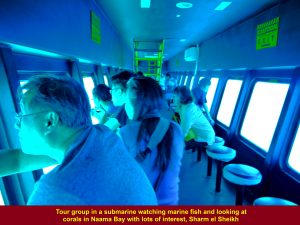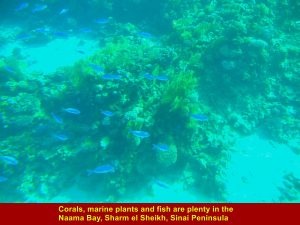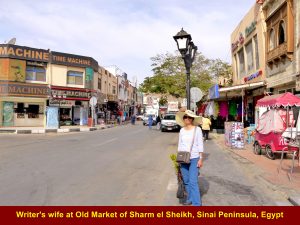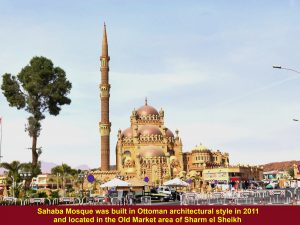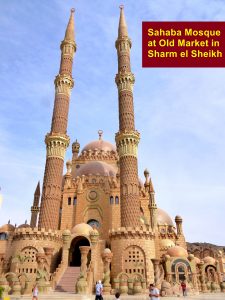Egypt Travel Part I: Salah el Din Citadel, Muhammad Ali Mosque, Tahrir Square and Egyptian Museum
Egypt Travel Part I: Salah el Din Citadel, Muhammad Ali Mosque, Tahrir Square and Egyptian Museum
Egypt
Egypt is the second country after South Africa in the continent of Africa that I visited on 13 Dec 2017. It is a country that has an interesting history dating back over 4000 years ago and it was recorded in hieroglyphic writing on tombs and walls of ruined temples.
Day 1 Wednesday 13 Dec 2017
Flying to Cairo from Singapore via Dubai
On 13 Dec 2017, my wife, brother, sister-in-law and I joined a group of 30 Singaporeans and flew on an Emirates airplane from Changi International Airport, Singapore, to Dubai and then another Emirates plane from Dubai to Cairo. The total distance was 9263 km and the flight-time taken was about 11 hours.
Arrival at Cairo International Airport, Egypt
On arrival at Cairo Airport, the tour group led by a tour manager, Yong Zheng, from Chan Brothers Travel Agency(Singapore) was welcomed by a young handsome Egyptian tour-guide, Khaled. We all boarded a coach and went straight to a famous fortress on a hill overlooking the City of Cairo. It is known as Salah el Din Citadel.
Salah el Din Citadel
Located on a low Mokattam Hill, Salah el Din Citadel was built in the period between 1176 and 1183 by Salah el Din to prevent the European crusade armies invading Cairo.
Pathway to the Fortress
To go to the fortress on the Mokattam Hill, we walked up a pathway. On the hill there are two large old mosques within the fortress, namely Al-Nasir Muhammad Mosque and Muhammad Ali Mosque or Alabaster Mosque.
Al-Nasir Muhammad Mosque
Sultan Al-Nasir, a Mamluk sultan, built a royal mosque within the fortress in 1318 and it was named after him. The sultans of Cairo performed their Friday prayers at the mosque.
Muhammad Ali Mosque or Alabaster Mosque
Within the fortress there is a larger mosque known as Muhammad Ali Mosque or Alabaster Mosque. It was built in Ottoman architectural style between 1830 and 1848 by Muhammad Ali when he came to power. He built it in memory of his deceased son.
Domes
The mosque looks impressive as it has two tall minarets, a dome in the centre surrounded by four semi-circular ones and four smaller ones in the corners. Colourful motifs can be seen in the interior of these domes.
10 000 Worshippers
Besides, the interior of the mosque is beautifully and richly decorated. Its walls and pillars are covered with alabaster, hence it is also known as Alabaster Mosque.
The mosque can accommodate about 10 000 worshippers. It has become an attraction for visitors and school-children too.
Panoramic View of Cairo City
At the back of this mosque, a visitor can see a panoramic view of the city of Cairo. On the day of our visit, we saw the city shrouded in haze due to air-pollution caused by vehicles, open-air burning and fine particles blown from Sahara Desert in the west.
Soiree Restaurant
Soon we left the fortress and went to a restaurant, Soiree, in the city for a buffet lunch. Inside the restaurant two pieces of colourful mosaic art on a wall attracted my attention. One showed a few Egyptian merchants in their traditional costumes talking among themselves and another a milkman.
Tahrir Square
After lunch we went to the Egyptian Museum. On the way we saw a public square known as Tahrir Square and was told by Khaled, the local tour-guide, that it was very important to the Egyptian people as it was a place where political demonstrations were often held.
2011 Egypt Revolution
During the 2011 Egypt Revolution, over 200 000 protesters demonstrated in Tahrir Square for 18 days resulting in the resignation of the President of Egypt, Hosni Mubarack. Mubarack who was the 4th. President of Egypt(1981-2011) was alleged to have abused his power and committed corruption. He was arrested and put on trail a few times but he was acquitted in March 2017.
Egyptian Museum
Finally, we arrived at the Egyptian Museum which was heavily guarded by soldiers. We had to go through strict security check before entering the museum. Inside the building we learned about the ancient Egyptian history dating back over 4000 years ago.
About 120 000 Exhibits
Egyptian Museum has a large collection of ancient Egyptian antiquities. About 120 000 of them are displayed on the ground floor and first floor.
Ground Floor
The ground floor has exhibits from the Archaic Period(3000 B.C.- 2700 B.C.) until the Roman and Byzantine Period(32 B.C. – 640 A.D.). The exhibits include coins, jewellery, statues, tables and coffins for mummies(scorphaguses).
First Floor
Displayed on the first floor are the artifacts from the last two dynasties of Egypt, such as those from some tombs of pharaohs in the Valley of the Kings. There are two rooms that have a few mummies of kings and other royal family members of the New Kingdom(1550 B.C. – 1077 B.C.).
Below are photos showing some of the ancient Egyptian exhibits in the museum:
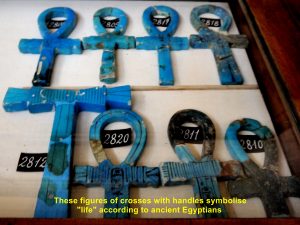
Figures with crosses and handles known as Ankhs are a symbol of life and good health in ancient Egyptian religion
King Tutankhamun
King or Pharoah Tutankhamu is the best known ancient Egyptian king in the world. It is because when his tomb was discovered in 1922 in the Valley of the Kings in Luxor, it was still intact and most of his items, over 5000 of them, were still in the tomb.
Special Room for King Tutankhamun’s Possessions
Some of the king’s objects are exhibited in a special room in the Egyptian Museum, Cairo. Unfortunately, taking photographs of his items in the room is not allowed.
Replica of Tutankhamun’s golden mask in the Egyptian Museum, Cairo
King Tutankhamun was born in 1341 B.C., became king at 9 years old in 1332, married his half-sister at 11 and passed away at 18 in 1323 B.C.. He ruled Egypt for about 10 years from 1332 B.C. until 1323 B.C..
Egyptian Deities
Ancient Egyptians worshipped many deities, as many as 114. Some of them are shown in the two pictures below.
They stopped worshipping them when Christianity and Islam spread to their homeland.
Ancient Egyptian Writing
The ancient Egyptians had a writing system that uses pictographic characters known as hieroglyphs. There are over 700 characters in the system. Some of them are shown in the picture below.
Jean Francois Champollion(1790 – 1832)
For many years no one knew how to read the hieroglyphic writing until 1822 when a Frenchman, Jean Francois Champollion(1790 – 1832 A.D.), was able to decipher it.
Rosetta Stone
There was a stone that was found near Rosetta Village(Rashid) by a French soldier in 1799. Known as Rosetta Stone, it has three kinds of writings , namely hieroglyphic at its top, demotic in the middle and Greek at the bottom. As Champollion knew the last two he deciphered the hieroglyphic writing in 1822, successfully. He found out that the hieroglyphs were phonetic representing the speech sound.

The Rosetta Stone was found in Egypt Delta in 1799 and Champollion was able to decipher the Egyptian hieroglyphic writing in 1822 inscribed on it.
Le Meridien Pyramids Hotel, Cairo
After a long day of visiting two important places in Cairo, viz. Salah el Din Citadel and Egyptian Museum, we checked in at a hotel, Le Meridien Pyramids Hotel, in the city and stayed for a night. We would be flying to Luxor for more visits on the following morning.

Tour group spending a night at Le Meridien Pyramids Hotel after a busy day visiting some tourists’ places in Cairo
Egypt Travel Parts I to XII:
Egypt Travel Part I :Salah el Din Citadel, Muhammad Ali Mosque, Tahrir Square and Egyptian Museum
Egypt Travel Part II :Valley of the Kings, Hatshepsut Temple and Colossi of Memnon
Egypt Travel Part III :Hot Air Balloons and Karnak Temple Complex
Egypt Travel Part IV :Papyrus Paper-Making, Luxor Temple and Esna Lock
Egypt Travel Part V :Edfu Temple, Kom Ombo Temple and Galabia Party
Egypt Travel Part VI :Abu Simbel Temples and Nubian Village(Elephantine Island)
Egypt Travel Part VII :Unfinished Obelisk, Aswan High Dam and Philae Temple
Egypt Travel Part VIII:Ahmed Hamdi Tunnel, Moon Beach(Ras Sudr), and St. Catherine
Egypt Travel Part IX :Mount Sinai, Catherine’s Monastery and Sharm el Sheikh
Egypt Travel Part X :Sharm el Sheikh
Egypt Travel Part XI :Cairo Food, Saqqara Step Pyramid Complex and Memphis
Egypt Travel Part XII :Great Giza Pyramid Complex and Khan el Khalil Bazaar
Egypt Travel Part II: Valley of the Kings, Hatshepsut Temple and Colossi of Memnon
Egypt Travel II: Valley of the Kings, Hatshepsut Temple and Colossi of Memnon
Day 2 Thursday, 14 Dec 2017
Flying from Cairo to Luxor by Egypt Air
Early in the morning we left Le Meridien Pyramids Hotel in Cairo and went to the airport nearby. At the airport we took an Egypt Air plane and flew to Luxor which is about 500 km in the south.
Map showing the location of Luxor, Egypt
Tour group boarding an Egypt Air plane at Cairo Airport
Luxor Airport
After flying for about an hour and 10 minutes , we arrived at the Luxor International Airport.
We were going to spend two days in Luxor making a few visits and doing some activities.
The first place we visited in Luxor was the Valley of the Kings.
Valley of the Kings
Located on the west bank of River Nile near Luxor city, Valley of the Kings is a necropolis or cemetery for the kings, powerful noblemen and their family members of the New Kingdom(18 – 20th. Dynasties of Ancient Egypt). From 1539 until 1075 B.C., a period of about 500 years, those deceased were buried there. So far about 63 tombs have been discovered but most of the treasures belonging to them were looted.
The first king to be buried there was Thutmose I(1504 – 1492 B.C.) and the last one was Ramesses XI who died in 1077 B.C.
Photos of the Valley of the Kings
Entry Ticket to the Valley of the Kings
Visitors have to buy a ticket to visit the Valley of the Kings and it looks like the one below.
Shuttles
Shuttles will bring visitors to the valley which is several hundred metres away from the entrance.
Writer and Family
Writer, wife, brother and sister-in-law went to the valley together to see the tombs of well-known ancient Egyptian kings and nobles.
A Happy Family
A happy family together with the rest of the tour group went to the Valley of the Kings.
Paths to the Tombs
There are paths leading to all the known tombs in the valley.
Tutankhamun Tomb
The most famous tomb was that of King Tutankhamun. Tutankhamun became king at the age of 9 in 1332 B.C. and ruled Egypt for 10 years before he died at the age of 18 in 1323 B.C. Nobody knows the exact cause of his death. Many scientists thought he died of a disease.
Howard Carter
Tutankhamun tomb was discovered by an English archaeologist, Howard Carter, in 1922 and found to be almost intact. Most of his possessions were still in the tomb, including his golden mask that is now in the Egyptian Museum in Cairo.
“Curse of the Pharaoh”
8 of the 58 people who were present when Pharaoh Tutankhamun’s tomb(sarcophagus) was opened died a few years later. Rumours of a “curse of the pharaoh” were spread by newspapers to boost their sales. Many of them lived a long life including Howard Carter who died in 1939 at the age of 64, 13 years after he and others discovered the Pharaoh Tutankhamun’s tomb in the Valley of the Kings.
Entrance to the tomb of Pharaoh Tutankhamun in the Valley of the Kings
Tutankhamun Burial Chamber
The diagram below shows the burial chamber of Tutankhamun deep in the ground in the Valley of the Kings.
Tomb of Ramesses II’s Sons
This tomb for Ramesses II’s sons is the largest in the Valley of the Kings in Luxor. The pharaoh ruled Egypt from 173 B.C. until 1213 B.C. and had more than 160 children.
j. Tomb of Ramesses IX
Ramesses IX ruled Egypt from 1129 B.C. until he died in 1111 B.C.. His tomb is in the Valley of the Kings, Luxor.
k. Ramesses VII’s Tomb
Ramesses VII ruled Egypt from 1136 B.C. until he died in 1129 B.C.. He was succeeded by Ramesses III’s son, Ramesses VIII, who ruled Egypt for a year(1129 – 1130 B.C.).
l. Merenptah’s Tomb
Merenptah was the 13th. son of Ramesses II and ruled Egypt for 10 years from 1213 B.C. until he died in 1203 B.C..
Visit to the Mortuary Temple of Hatshepsut, Deir el Bahari
In the afternoon we left the hot and dry Valley of the Kings and went to the other side of the mountain where a mortuary known as Mortuary Temple of Hatshepsut was located.
Entry Ticket to the Mortuary Temple of Hatshepsut, Deir el Bahari
Mortuary Temple of Hatshepsut
Mortuary Temple of Hatshepsut was built at the bottom of the cliffs of Deir el Bahari close to the Valley of the Kings and on the west bank of River Nile in Luxor. It was built for Queen Hatshepsut, the Pharaoh of the 18th. Dyanasty who ruled Egypt from 1478 B.C. until 1458 B.C., and dedicated to the Sun God, Amun-Ra.
Queen Hatshepsut’s tomb is believed to be in the Valley of the Kings.
Photos at the Temple
Here are some photos taken at the temple site.
Panoramic View of the Mortuary Temple of Hatshepsut in Deir el Bahari, West Luxor
Tour Group at the Mortuary Temple of Hatshepsut
A Restored Sphinx at the Mortuary Temple of Hatshepsut
Statues of Osiris at the entrance of the Mortuary Temple of Hatshepsut
Ancient Egyptians believed that Osiris was the god of transition, resurrection and regeneration. Many large statues of that god can be seen in front of the temple.
Bark Hall Entrance of the Mortuary Temple of Hatshepsut
Entrance to the Bark Hall of the Sanctuary of the Sun Deity, Amun-Ra, in the Mortuary Temple of Hatshepsut

Entrance to the Bark Hall of the Sanctuary of the Sun Deity, Amun-Ra, in the Mortuary Temple of Hatshepsut
Bark Hall of the Sanctuary of the Sun God, Amun
The innermost Sanctuary of the Sun Deity, Amun
Panoramic view outside the Mortuary Temple of Hatshepsut
View from the temple to River Nile in the background
Visit to Abd Shanab Alabaster Shop
After the visit to the Mortuary Temple of Hatshepsut, we went to a shop, Abd Shanab Alabaster, in Luxor town to learn about alabaster carving of ancient Egyptian objects.
Abd Shanab Alabaster
When we arrived at Abd Shanab Alabaster shop its workers showed us the method of sculpturing alabaster stones into ancient Egyptian objects and figures.
Then we entered the shop and were introduced to many ready-made products which were for sale. They were beautifully made with details. The photos below show some of them displayed in the shop.
Colossi of Memnon
Soon we left the shop and went to a bank of River Nile in town to board a cruise boat called Jamina. On the way we saw two giant statues, Colossi of Memnon. They were both statues of Pharaoh Amenhotep III, the 9th. Pharaoh of the XVIIIth. Dynasty(1550-1292 B.C.). They were found buried in the ground many years ago and restored with many missing parts.
Cruise Boats on River Nile
When we arrived at the bank of River Nile, we saw many cruise boats and we boarded one of them known as Jamina. We would cruise on that boat from Luxor to Aswan in the south for four days stopping at some cities to visit their historical sites.
Egypt Travel Parts I to XII
Egypt Travel Part I :Salah el Din Citadel, Muhammad Ali Mosque, Tahrir Square and Egyptian Museum
Egypt Travel Part II :Valley of the Kings, Hatshepsut Temple and Colossi of Memnon
Egypt Travel Part III :Hot Air Balloons and Karnak Temple Complex
Egypt Travel Part IV :Papyrus Paper-Making, Luxor Temple and Esna Lock
Egypt Travel Part V :Edfu Temple, Kom Ombo Temple and Galabia Party
Egypt Travel Part VI :Abu Simbel Temples and Nubian Village(Elephantine Island)
Egypt Travel Part VII :Unfinished Obelisk, Aswan High Dam and Philae Temple
Egypt Travel Part VIII:Ahmed Hamdi Tunnel, Moon Beach(Ras Sudr), and St. Catherine
Egypt Travel Part IX :Mount Sinai, Catherine’s Monastery and Sharm el Sheikh
Egypt Travel Part X :Sharm el Sheikh
Egypt Travel Part XI :Cairo Food, Saqqara Step Pyramid Complex and Memphis
Egypt Travel Part XII :Great Giza Pyramid Complex and Khan el Khalil Bazaar
Egypt Travel Part III: Hot Air Balloon and Karnak Temple Complex
Egypt Travel Part III: Hot Air Balloon and Karnak Temple Complex
Day 3 Friday, 15 Dec 2017
Early in the morning, we left our cruise boat at Luxor City and went to a place near Del el Bahari where Mortuary Temple of Hatshepsut is located and oh the west bank of River Nile.
Tour group going off for hot air balloon ride at sunrise
Hot Air Balloons in the Sky
On arrival at the site, we saw several hot air balloons that were already flying in the sky.
Warming-Up
Before we got into a balloon basket, we warmed up first.
Gas-Burners
The balloon was filled with air and then heated by gas-burners to get the balloon upright.
Hot Air is Light
Gas-burners are used for heating the air in balloons to make them light.
Three Cylinders of Gas
Three cylinders gas are used for heating the balloon.

Three cylinders of gas for heating hot air-balloone, 24 of us, got into a large basket and soon we were flying in the sky.
Large Basket
24 of us got into a large basket of the hot air balloon and soon we were going up in the sky, slowly.
Bakr, the Pilot of the Hot Air Balloon
The pilot of the balloon was Bakr from Hod Hod Soliman Company, Luxor. As we were flying over the fertile flood plain of River Nile and the historical Thebes Necropolis where graves of ancient Egyptian royal members and powerful nobles are sited, Bakr would point at the important sites below and beyond and tell the tour-members about them.
Bakr, the pilot of the hot air balloon
Hot air in the balloon makes the balloon rise
Panoramic View of the Thebes Necropolis, Luxor
The panoramic view of the Thebes Necropolis and fertile flood plain of River Nile was breathtaking.
Aerial View of Thebes Necropolis and Fertile Flood Plain of River Nile
Ruined Temples
There were a few temples which were already in ruin in the Thebes Necropolis. Among them was the ruined Temple of Ramesses III which we sighted.
Valley of the Queens
Looking further away we saw the Valley of the Queens where pharaohs’ wives were buried.
Fertile Flood Plain
The aerial view of the fertile flood plain adjacent to the Thebes Necropolis was spectacular. It was richly cultivated and inhabited by farmers.
Landing
After flying for more than an hour in the sky and enjoying the awesome sights of the place, we finally landed, safely, on an empty land which was a couple of km away from the site where we lifted off. Then we were each given a certificate from Hod Hod Soliman Company that stated that we had flown in a hot air balloon.
Exhilarating Feeling
While I was on the ground, my exhilarating feeling of flying in the hot air balloon lingered on for awhile.
Tour Members receiving certificates of successful hot air balloon ride
Visiting Karnak Temple Complex
After the unforgettable hot air balloon experience, we went to an ancient temple complex located about 2 km north of Luxor town.
Karnak Temple Complex
Karnak Temple Complex consists of some temples that were built several thousand years ago. The temples are already in ruin but restoration works have been on-going.
Temple of Ramun-Ra, the Sun-God
There is one, Temple of Ramun-Ra, that has been partially restored and opened to public. It was dedicated to the Sun God, Ramun-Ra.
Model of the Temple of Ramun-Ra in the Karnak Temple Complex
Old Photo of the Aerial View of Temple of Ramun-Ra
The Front of the Temple of Ramun-Ra
Entrance to the Great Hypostyle Hall of the Temple of Ramun-Ra
Statues of Ramun-Ra and his daughter, Meri-Amun, at the entrance of the Great Hypostyle Hall of the Temple of Ramun-Ra

Statues of Amun-Ra and his daughter, Meri-Amun, at the entrance of the Great Hypostyle Hall of the Temple of Amun-Ra
134 Columns in the Great Hypostyle Hall of the Temple of Ramun-Ra

134 tall columns in the Great Hypostyle Hall were built to support a stone roof of the Temple of Amun-Ra
Obelisk of Queen Hatshepsut at the Temple of Ramun-Ra
Obelisks of King Tuthmosis I and Queen Hatshepsut at the Temple of Ramun-Ra
A Pylon of the Karnak Temple Complex is Under Restoration
A Ruined Temple at the Karnak Temple Complex
A Relief of the Temple of Amun-Ra
Egyptian Hieroglyphs in the Temple of Amun-Ra
Sondos Papyrus
After the visit to the Karnak Temple Complex, we went to a shop, Sondos Papyrus in Luxor City. It was selling arts on papyrus papers.
Egypt Travel Parts I to XII
Egypt Travel Part I :Salah el Din Citadel, Muhammad Ali Mosque, Tahrir Square and Egyptian Museum
Egypt Travel Part II :Valley of the Kings, Hatshepsut Temple and Colossi of Memnon
Egypt Travel Part III :Hot Air Balloons and Karnak Temple Complex
Egypt Travel Part IV :Papyrus Paper-Making, Luxor Temple and Esna Lock
Egypt Travel Part V :Edfu Temple, Kom Ombo Temple and Galabia Party
Egypt Travel Part VI :Abu Simbel Temples and Nubian Village(Elephantine Island)
Egypt Travel Part VII :Unfinished Obelisk, Aswan High Dam and Philae Temple
Egypt Travel Part VIII:Ahmed Hamdi Tunnel, Moon Beach(Ras Sudr), and St. Catherine
Egypt Travel Part IX :Mount Sinai, Catherine’s Monastery and Sharm el Sheikh
Egypt Travel Part X :Sharm el Sheikh
Egypt Travel Part XI :Cairo Food, Saqqara Step Pyramid Complex and Memphis
Egypt Travel Part XII :Great Giza Pyramid Complex and Khan el Khalil Bazaar
Egypt Travel IV: Papyrus Paper Making, Luxor Temple Complex and Esna Lock
Egypt Travel IV: Papyrus Paper Making, Luxor Temple Complex and Esna Lock
Papyrus Paper-Making Lesson at Sondos Papyrus Shop in Luxor
After seeing the Karnak Temple Complex we visited a shop in Luxor City that was selling paintings on papyrus papers. It was called Sondos Papyrus.
When we entered the shop we were given a lesson on papyrus paper making by the owner. He showed us the method of doing it using simple tools as shown in the photos below.
Simple Tools for Papyrus Paper-Making
First he showed us papyrus stems.
The stems were cut into short pieces and soaked in a bowl of a dark liquid.
Then he cut the stems into thin strips.
The strips were flattened by a mallet.
He used a pin-roller to squeeze out the water in the flattened strips.
Next, he said that the strips had to be soaked in water for six days to make them soft.
Arrangement of Papyrus Strips
He took out some papyrus strips that had already soaked for six days and arranged them vertically and horizontally on a flat sheet of rubber until they looked like a piece of paper.
Pressing Machine
He put the arranged strips in a machine and pressed out the water. He said that they would be left inside for six days when they would become a piece of paper.
Papyrus Paper
The gentleman took out a readily made papyrus paper and said that the strips would look like that piece of paper after six days
Writing and Painting
The papyrus paper can be used for writing and painting. It was used by ancient Egyptian rulers.
Below are some of the paintings drawn on papyrus papers which were displayed in the shop and for sale.
“Sphinx”
“Pharaoh”
“Tree of Life”
“Goddesses”
“Chariot”
“Ancient Egyptian Deities”
“Hunting”
“Abu-Simbel Temples”
Visiting Luxor Temple Complex
Having spent an hour at Sondos Papyrus shop, we went to a historical site near Luxor City and it is known as Luxor Temple Complex.
Luxor Temple Complex
Luxor Temple Complex was built by two kings, Ramessess II(1290-1224 B.C.) and Amenhotep III(1391-1353 B.C.). Later, the Roman Emperor, Diocletlan(244-312 A.D.), built a fortress round it in the late 3rd. Century A.D.. Then churches were built at the Luxor Temple Complex.
Ticket to enter the Luxor Temple Complex
Temple of Ramesses II
The Temple of Ramesses II was one of the temple we visited at the Luxor Temple Complex.
Below are some photos showing parts of the Temple of Ramesses II
Facade or Pylon of the Temple of Ramesses II(1279-1213 B.C.)
Entrance to the Temple of Ramesses II flanked by the statues of Ramesses II at the Lixor Temple Complex
Obelisk of King Ramesses II(1279-1213)
There were actually two obelisks of King Ramesses II at the temple entrance. But only one is left and the other is kept in Paris, France.

The Obelisk of Ramesses II on the left and the missing one on the right(now in Paris, France) at the entrance of the Temple of Ramesses II
Courtyard in the foreground and Tripartite Shrine in the background of the Temple of Ramesses II

Courtyard of Ramesses II in the foreground and the Tripartite Shrine in the background in the Temple of Ramesses II
Colonnade Hall of Amenhotep III(Reign:1391-1353 B.C.) and Tutankhamun(Reign:1332-1323 B.C.)

Courtyard of Ramesses II in the foreground and Colonnade Hall of Amenhotep III and Tutankhamun in the background
Columns and Statues in the Courtyard of Amenhotep III, LuxorTemple Complex
Stone Head of Ramesses II in the Temple of Ramesses II, Luxor Temple Complex
Statues of King Amenhotep and his wife, Tiye
Entrance to the Amenhotep III Sanctuary
Amun’s or Sun God’s Boat
Mosque of Abu el-Haggag
There is a mosque in the compound of Ramesses II Temple at the Luxor Temple Complex. Known as Abu el-Haggag, it was built on a ruined Coptic church of the 6th. Century A.D..
50000 Stone Blocks
There are over 500 000 stone blocks outside the temple of Ramesses II which are from the walls of the ruined Temple of Ramesses II and other temples too.
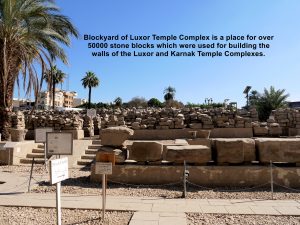
Blockyard of Luxor Temple Complex has a collection of over 50000 stones that are from the walls of the ruined temples at the Luxor Temple Complex
Sailing to Edfu
In the evening we left Luxor City and went back to our cruise boat on River Nile. Soon our boat set sail for Edfu which is 60 km south of Luxor.
River Nile Pedlars
On the way, we saw some pedlars on their small boats tied to our moving large boat trying to sell their textile products to the passengers.
I was fascinated by the way those pedlars doing their sales.
Pedlar’s Sale-Method
A pedlar will call passengers on a cruise boat, loudly. If he spots one looking down at him, he will strike a friendly conversation with him/her and then show his product. Before the passenger can give him a positive or negative answer, the latter throws his product in a waterproof plastic bag to him/her with accuracy. He will ask the person to have a look at the product, put the money in the same bag and throw it back to him if the price is acceptable to the passenger. Otherwise, he has to throw the product back to the pedlar.
Cruise boats sailing on River Nile from Luxor to Aswan
Esna Lock
To go to Edfu from Luxor our cruise boat had go through a lock at Esna in order to get to the higher water level of River Nile.
Esna Lock Pedlars
At the Esna Lock, pedlars in small boats tried to sell their goods to us. We were amazed that they could throw their goods to us while we were on the top deck of our boat which was about 13 metres above the water level!
Two Pedlars in Esna Lock with their goods
A tour-member caught a pedlar’s product but she threw it back to him as she did not need it.
Lower and Upper Gates of Locks
The Esna Lock allows two cruise boats to enter at a time. The photos below show the working of the lock.
Opening of Lower Gate
The lower gate opens, slowly, and the water flows out.

The lower gate of the Esna Lock opens slowly to allow the cruise boat to enter.
Lower Gate Opening Wide
When the lower gate is wide, the boat enters the lock.
Cruise Boat entering the Esna Lock
The boat enters the lock, slowly.
Opening of Upper Gate
When the boat is inside the lock, the lower gate closes. Then the upper gate opens to allow water to flow into the lock raising the boat.
Boat Exiting Lock
When the water level inside the lock is the same as the outside, the boat sails out of the lock and continues its journey to the south.
Two boats are allowed to enter the lock at a time
40 Minutes in the Lock
A cruise boat will take about 40 minutes to pass through the Esna Lock.
After passing through the lock, our boat continued the journey to Edfu in the south.
Before dawn broke, we reached Edfu.
(Continue in Egypt Travel Part V)
Egypt Travel Parts I to XII
Egypt Travel Part I :Salah el Din Citadel, Muhammad Ali Mosque, Tahrir Square and Egyptian Museum
Egypt Travel Part II :Valley of the Kings, Hatshepsut Temple and Colossi of Memnon
Egypt Travel Part III :Hot Air Balloons and Karnak Temple Complex
Egypt Travel Part IV :Papyrus Paper-Making, Luxor Temple and Esna Lock
Egypt Travel Part V :Edfu Temple, Kom Ombo Temple and Galabia Party
Egypt Travel Part VI :Abu Simbel Temples and Nubian Village(Elephantine Island)
Egypt Travel Part VII :Unfinished Obelisk, Aswan High Dam and Philae Temple
Egypt Travel Part VIII:Ahmed Hamdi Tunnel, Moon Beach(Ras Sudr), and St. Catherine
Egypt Travel Part IX :Mount Sinai, Catherine’s Monastery and Sharm el Sheikh
Egypt Travel Part X :Sharm el Sheikh
Egypt Travel Part XI :Cairo Food, Saqqara Step Pyramid Complex and Memphis
Egypt Travel Part XII :Great Giza Pyramid Complex and Khan el Khalil Bazaar
Egypt Travel Part V: Temple, Kom Ombo Temple and Galabia Party
Egypt Travel Part V: Temple, Kom Ombo Temple and Galabia Party
Map showing the location of Edfu and Kom Ombo
Day 4 Saturday, 16 December 2017
After breakfast on the cruise boat at Edfu, we took Egyptian horse-drawn carriages, kaleshes, passed through the town of Edfu and stopped at a temple known as Edfu Temple.
Tour group’s cruise on River Nile at Edfu, Egypt
Tour group riding horse-drawn carriages, “kalesha”, from their cruise boat to the Edfu Temple or Temple of Horus
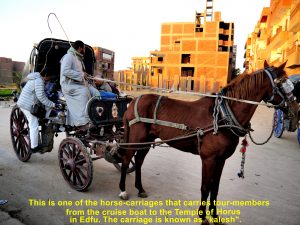
Tour group riding horse-drawn carriages from their cruise boat to the Edfu Temple or Temple of Horus
Ticket to enter Edfu Temple or Temple of Horus
Edfu Temple or Temple of Horus
Edfu Temple was built in the Ptolemaic Period(305-30 B.C.) for a falcon god known as Horus. Hence, it is also known as Temple of Horus.
Below are some photos of the Edfu Temple or Temple of Horus:
Facade or Pylon of the Edfu Temple
Tour group at the Edfu Temple
Statue of Horus on the left entrance of the Edfu Temple
Statue of Horus on the entrance of the Edfu Temple
Tour group in the Peristyle Hall of the Edfu Temple or Temple of Horus
Peristyle Hall in the foreground and Pylon of the Edfu Temple in the background
Passage from Hall of Offerings to the Horus Sanctuary in the Edfu Temple
Horus Sanctuary in the Edfu Temple. It houses a sacred boat of Horus in the rear of the Edfu Temple.
Blackened ceiling caused by arson in the Hypostyle Hall in the middle of the Edfu Temple
Egyptian tour-guide, Khaled, explaining the relief on a wall of the Edfu Temple
A relief on the back of the pylon of the Edfu Temple
Another relief on a wall of the Edfu Temple
Hieroglyphs on a wall of the Edfu Temple
Writer’ wife waiting in a “kalesha”(horse-drawn carriage) for other tour-members to return from the Temple of Horus
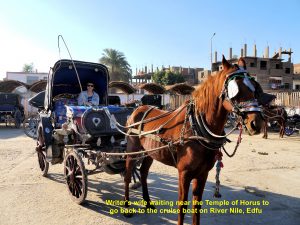
Writer’s wife on a “kalesha” waiting near the Temple of Horus for other members to go back to the cruise boat on River Nile at Edfu
Departure for Kom Ombo
After visiting the Edfu Temple for a couple of hours, we rode on “kaleshas” back to our cruise boat. Before noon our boat set sail again. It was sailing on River Nile further south to another historical place known as Kom Ombo.
Kom Ombo
On arrival at Kom Ombo in the afternoon, we disembarked the boat and walked a short distance to a temple which was on a low hill. It was known as Kom Ombo Temple.
Cruise Boat stopping at Kom Ombo
A ticket to enter Kom Ombo Temple and Crocodile Museum
Temple for Sobek and Horus
Known as Kom Ombo Temple, it was built in the Ptolemaic Dynasty(180-47 B.C.) for the Crocodile God, Sobek, and two more gods, and the Falcon God, Horus, and two more other gods.
Kom Ombo Temple built on a low hill near River Nile
Kom Ombo Temple was built for two sets of Gods
Side view of Kom Ombo Temple
Passage through Kom Ombo Temple
A relief showing medical information in Kom Ombo Temple
A relief showing a priest communicating with Sobek, the crocodile god. in the Kom Ombo Temple
A large stone block of Horus and Sobek outside the Kom Ombo Temple
A large stone block with hieroglyphs outside the Kom Ombo Temple
Top columns lying outside the Kom Ombo Temple
Nilometer outside the Kom Ombo Temple
It was used for measuring the level and checking the clarity of the water from River Nile
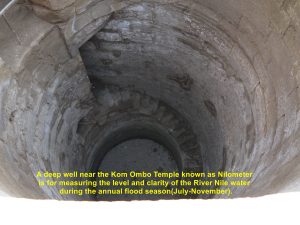
Nilometer near Kom Ombo Temple was used for measuring the level and checking the clarity of the water from River Nile
Crocodile Museum
At the foot of the hill there was a crocodile museum that housed some preserved crocodiles and live ones too.
Returning to the Cruise Boat
After visiting the Kom Ombo Temple and the crocodile museum, we walked back to our cruise boat.
“Galabia” Party Time on Cruise Boat
After dinner, it was fun and game time at a party for the tour group on the cruise boat. Some tour members dressed in Egyptian long clothes known as “galabia”. Koh, his wife and daughter were the most well-dressed in “galabia”.(see photo below)
The most well-dressed family in “galabia” was Koh family
Dances and Games
Our Egyptian tour-guide, Khaled, encouraged us to dance. Then he conducted a few fun games.
A Hilarious Game
One of the games had us in stitches. In that hilarious game, four male members had a small ball each that was hung on a string tied around his waist. They had to hit another ball to the finishing line on the floor. The player who got the ball to the finishing line first would be the winner. The winner for that game was Koh.
Some photos below showing the enjoyable activities at the “galabia” party”
Hitting a ball with another ball to the finishing line
Dancing
“Spoon Game”
After the party, we all retirned to our rooms on the cruise boat. The boat was sailing south to Aswan from Kom Ombo at night. The distance between them is 48 km.
Arrival at Aswan and Departure to Abu Simbel
In the early morning, our boat reached Aswan. After breakfast, we left the boat and travelled by coach through Sahara Desert to a place in the south known as Abu Simbel, another historical place.
(Continue in Egypt Travel Part VI)
Egypt Travel Parts I to XII
Egypt Travel Part I :Salah el Din Citadel, Muhammad Ali Mosque, Tahrir Square and Egyptian Museum
Egypt Travel Part II :Valley of the Kings, Hatshepsut Temple and Colossi of Memnon
Egypt Travel Part III :Hot Air Balloons and Karnak Temple Complex
Egypt Travel Part IV :Papyrus Paper-Making, Luxor Temple and Esna Lock
Egypt Travel Part V :Edfu Temple, Kom Ombo Temple and Galabia Party
Egypt Travel Part VI :Abu Simbel Temples and Nubian Village(Elephantine Island)
Egypt Travel Part VII :Unfinished Obelisk, Aswan High Dam and Philae Temple
Egypt Travel Part VIII:Ahmed Hamdi Tunnel, Moon Beach(Ras Sudr), and St. Catherine
Egypt Travel Part IX :Mount Sinai, Catherine’s Monastery and Sharm el Sheikh
Egypt Travel Part X :Sharm el Sheikh
Egypt Travel Part XI :Cairo Food, Saqqara Step Pyramid Complex and Memphis
Egypt Travel Part XII :Great Giza Pyramid Complex and Khan el Khalil Bazaar
Egypt Travel Part VI: Abu Simbel Temples and Nubian Village(Elephantine Island)
Egypt Travel Part VI: Abu Simbel Temples and Nubian Village(Elephantine Island)
Day 5 Sunday, 17 Dec 2017
Aswan to Abu Simbel by Coach
Early in the morning, we left our cruise boat on River Nile in Aswan and travelled south to Abu Simbel by coach to visit a temple complex, Abu Simbel Temple Complex, that consisted of two temples, the Great Temple and Small Temple.
Ticket to visit the Abu Simbel Temple Complex
Tour group posing a photo in front of the Great Temple on 17 Dec 2017
In front of the temple there are four large statues of King Ramesses II at different ages.
The Great Temple was built for three deitises, Ra-Harakhty, Ptah and Amun, and King Ramesses II(1303-1213 B.C.)
The Abu Simbel Temple Complex consists of the Great Temple and Small Temple.
They were built in the 1264-1244 B.C. period during the reign of King Ramesses II.
The Great Temple of the Abu Simbel Temple Complex was built for three deities and King Ramesses II
The Small Temple of the Abu Simbel Temple Complex was built for Goddess Hathor and King Ramesses II’s consort, Nefertari.
Writer holding an “ankh”(a cross with a handle) that symbolises life at the entrance of the Great Temple
Relocation of the Abu Simbel Temple Complex
Lake Nasser which is 200 metres from the Abu Simbel Temple Complex is a large artificial lake created by the construction of Aswan High Dam. It causes the relocation of the Abu Simbel Temple Complex to the present high ground in the period of 1964-1968 during which the dam was being built.
Lake Nasser. a large artificial lake, created by the construction of the Aswan High Dam
Returning to Aswan
Having seen the two temples of the Abu Simbel Temple Complex, we travelled back to our cruise boat at Aswan where we had lunch.
Felucca Sailing Boat Ride on River Nile
In the afternoon we boarded a wooden sailing boat known as felucca. It has a triangular sail known as lateen.
Feluccas sailing on River Nile, Aswan
Tour group boarding a felucca to experience the small wooden boat ride
Singing
As our felucca was sailing along River Nile, two crew men sang a few simple English songs and we joined them, too. After an hour on the felucca, we boarded a motor-boat that brought us to a Nubian village on Elephantine Island on River Nile and near Aswan City.
Two felucca crewmen were entertaining the tour group with simple English songs. The latter then joined them.

Two felucca crewmen were entertaining the tour group with simple English songs. The latter then joined them.
Mausoleum of Aga Khan III
On the way to a Nubian Village, we saw a pink building on a high bank of River Nile. It was Mausoleum of Aga Khan III built in 1959.
Sir Aga Khan III or Sultan Muhammed Shah(1877-1957) was the 48h. Iman of the Nizari Ismaili Community in Egypt. He died in 1957 and two years later he was buried in the mausoleum there requested by one of his wives.
Mausoleum of Aga Khan III sitting on a high bank of River Nile, Aswan
Nubian Village
Soon we reached the Nubian village. It was a small village with a few streets lined with stalls and shops. Most of them were selling souvenirs ranging from apparels to home-made jewellery.
A Nubian village on Elephantine Island
Tour group arriving at a Nubian village on Elephantine Island, Aswan
Figurines of Nubian people for sale at a stall in the village
Home-made jewellery for sale
A grocery shop selling coloured spices in the village
A grocery selling a wide variety of daily necessities in the village
A Small School
In the village, we entered a class-room in a small school and a Nubian teacher taught us some Arabic words.
A small Nubian village school on Elephantine Island, Aswan
Tour group learning some Arabic words at a Nubian small village school, on Elephantine Island, Aswan
Crocodiles
Then we visited a senior villager’s house where he treated us to some home-made bread and showed us his prized possessions which were crocodiles. He encouraged us to choose one for a camera-shot. A larger one could be seen in a locked cage.
Tour group tasting Nubian home-made bread at a senior villager’s house
The senior villager encouraged the group tour to choose a crocodile on a table for a camera-shot.
A brave tour-member holding a baby crocodile for a camera-shot while the senior villager was watching her
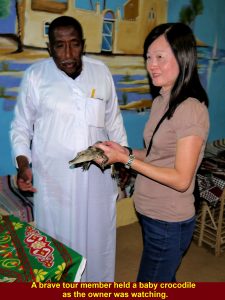
A brave tour member holding a baby crocodile for a camera shot while the senior villager was watching her
A young, brave tour-member holding a baby crocodile for a camera-shot
Tour group watching a large crocodile in a locked cage
Night scenes of Nubian village in the foreground and Aswan City in the background
A brightly-lit business street in the Nubian village
Another brightly-lit business street in the Nubian village
Tour Group leaving the Nubian Village
In the evening we left the Nubian Village and went back by a motor boat to our cruise boat to rest.
Tour group leaving the Nubian village by a motor-boat
(Continue in Egypt Travel Part VII)
Egypt Travel Parts I to XII
Egypt Travel Part I :Salah el Din Citadel, Muhammad Ali Mosque, Tahrir Square and Egyptian Museum
Egypt Travel Part II :Valley of the Kings, Hatshepsut Temple and Colossi of Memnon
Egypt Travel Part III :Hot Air Balloons and Karnak Temple Complex
Egypt Travel Part IV :Papyrus Paper-Making, Luxor Temple and Esna Lock
Egypt Travel Part V :Edfu Temple, Kom Ombo Temple and Galabia Party
Egypt Travel Part VI :Abu Simbel Temples and Nubian Village(Elephantine Island)
Egypt Travel Part VII :Unfinished Obelisk, Aswan High Dam and Philae Temple
Egypt Travel Part VIII:Ahmed Hamdi Tunnel, Moon Beach(Ras Sudr), and St. Catherine
Egypt Travel Part IX :Mount Sinai, Catherine’s Monastery and Sharm el Sheikh
Egypt Travel Part X :Sharm el Sheikh
Egypt Travel Part XI :Cairo Food, Saqqara Step Pyramid Complex and Memphis
Egypt Travel Part XII :Great Giza Pyramid Complex and Khan el Khalil Bazaar
Egypt Travel Part VII: Unfinished Obelisk, Aswan High Dam and Philae Temple
Egypt Travel Part VII: Unfinished Obelisk, Aswan High Dam and Philae Temple
Day 6 Monday, 18 Dec 2017
Unfinished Obelisk in Aswan
In the morning we left our cruise boat at Aswan and travelled to a place near the city to see an unfinished obelisk which was left attached to the bedrock in the quarries of granite over 3000 years ago. It was abandoned due to the formation of cracks in it. It was believed that the obelisk was ordered by Queen Hatshepsut(1508-1459 B.C.).
Ticket to see an unfinished obelisk in Aswan
Office and entrance to see the unfinished obelisk in Aswan
A short video clip about the unfinished obelisk was presented in the Office
The unfinished obelisk is located on a low hill of granite near the office, Aswan
Tour group walking up a low hill to see the unfinished obelisk
Tour group looking at the unfinished obelisk which was already cracked
The unfinished obelisk that was abandoned over 3000 years ago due to the formation of cracks in it
The unfinished obelisk was abandoned by Queen Hatshepsut(1508-1458) because it had formed cracks

The unfinished obelisk ordered by Queen Hatshepsut(1508-1458 B.C.) was abandoned over 3000 years ago due to the formation of cracks in it.
Writer, wife, brother and sister-in-law at the site of the unfinished obelisk
Tour members, Peter Lim, and family were at the site, too.
Visiting Aswan High Dam
After seeing the unfinished but cracked obelisk, we travelled on the road to a large dam known as Aswan High Dam. We entered the dam area with a ticket. It was heavily guarded by soldiers.
Ticket to visit Aswan High Dam, Egypt
Purposes of Aswan High Dam
The dam was built across River Nile in Aswan in 1960-1970 period. It controls flooding, provides water for irrigation and generates hydro-electricity for industries.
Dam Dimensions
The dam is 111 metres high, 3830 metres long and 980 metres wide at its base.
2100 MW of Electricity
The large lake created by the dam is known as Lake Nasser on one side(south) and the water of the lake flows through the dam power stations into River Nile on the other side(north) generating 2100 MW of electricity.
Visitors at the Aswan High Dam
Lake Nasser, a large artificial lake, was created by the construction of the Aswan High Dam. It covers a surface area of 5250 sq. km.
Water from Lake Nasser flows through the dam and power stations into River Nile in the north
Diagram showing water flowing from Lake Nasser through the dam to the power stations and then to River Nile
Diagram showing the power stations that can generate hydro-electricity of 2100 MW capacity

Diagram showing water flowing from Lake Nasser to the power stations generating hydro-electricity of capacity of 2100 MW
Writer and wife at the Aswan High Dam, Egypt
Visiting Philae Temple or Temple of Isis on Agilkia Island
Then we left the Aswan High Dam and moved on to another place to see an ancient temple. We had to take a motor-boat to a tiny island, Agilkia Island, in the Lake of Nasser. That temple is called Philae Temple or Temple of Isis. It was relocated to that island before its original site nearby was submerged by Lake Nasser in the 1970s.
Ptolemy II(Reign:285-246 B.C.)
The temple was constructed by Ptolemy II when he ruled Ptolemaic Egypt from 285 until 246 B.C. It was dedicated to Goddess Isis who was the wife of Osiris and mother of Horus. More parts were added to the main temple later by other Ptolemaic kings. Traces of the work done by some Roman emperors were discovered at the temple.
The Philae Temple or Temple of Isis was abandoned in the 6th. Century due to the arrival of Christianity and Islam.
Tour Group taking a motorboat from the Marina Philae Temple Jetty to Agilkia Island
Philae Temple or Temple of Isis is now on Agilkia Island in Aswan
Pylon or Facade of Philae Temple or Temple of Isis
Left Colonnades of Philae Temple or Temple of Isis
Right Colonnades of Philae Temple or Temple of Isis
Entrance of Sanctuary of Goddess Isis
Sanctuary of Goddess Isis
Egyptian Tour Guide talking about the Philae Temple or Temple of Isis to the Tour Group
A relief on a temple wall showing the figures of Goddess Isis
A defaced relief showing Goddess Isis watching a priest treating a sick person
A relief showing a priest offering food to Goddess Isis
A relief showing a priest worshipping Goddess Isis
Trajan’s Kiosk near the Temple of Isis was built by a Roman emperor, Trajan, who ruled his empire from 98 until 117 A.D..
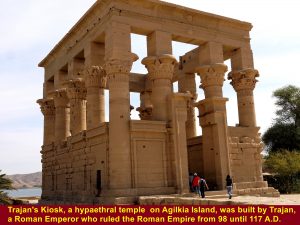
Trajan’s Kiosk was built near the Temple of Isis by a Roman emperor, Trajan who ruled his empire from 98 until 117 A.D.
An altar for making offerings to Goddess Isis
Writer and wife at the Philae Temple or Temple of Isis on 18 Dec 2017
Tour Group leaving Agilkia Island where the Philae Temple or Temple of Isis is located
Tour group going for a Nubian lunch at el Dokka Restaurant, Aswan
We returned to the Marina Temple Philae from Agilkia Island and took another boat to a tiny island to have a Nubian lunch at a restaurant known as el Dokka Restaurant in Aswan.
Tour group taking another boat from Marina Temple Philae to a small island for a Nubian lunch at el Dokka Restaurant in Aswan
Tour Group arriving at a tiny island for a Nubian lunch at el Dokka Restaurant
el Dokka Restaurant atop a rock
Dining Hall of el Dokka Restaurant, Aswan
A plate of Nubian fried chicken and rice
Nubian fried mushrooms and salad
A Nubian claypot dish
Nubian coffee for guests at el Dokka Restaurant, Aswan
A five-star hotel, Sofitel Legend Old Cataract Hotel, on the Bank of River Nile
Flying back to Cairo from Aswan
In the evening we took an airplane at Aswan International Airport and flew back to Cairo, a distance of 682 km, for an hour and 10 minutes.
On arrival at Cairo we checked in at Le Meridien Hotel. Early in the following morning, we left the hotel by coach for Sinai Peninsula in the east.
(Continue in Egypt Travel Part VIII)
Egypt Travel Parts I to XII
Egypt Travel Part I :Salah el Din Citadel, Muhammad Ali Mosque, Tahrir Square and Egyptian Museum
Egypt Travel Part II :Valley of the Kings, Hatshepsut Temple and Colossi of Memnon
Egypt Travel Part III :Hot Air Balloons and Karnak Temple Complex
Egypt Travel Part IV :Papyrus Paper-Making, Luxor Temple and Esna Lock
Egypt Travel Part V :Edfu Temple, Kom Ombo Temple and Galabia Party
Egypt Travel Part VI :Abu Simbel Temples and Nubian Village(Elephantine Island)
Egypt Travel Part VII :Unfinished Obelisk, Aswan High Dam and Philae Temple
Egypt Travel Part VIII:Ahmed Hamdi Tunnel, Moon Beach(Ras Sudr), and St. Catherine
Egypt Travel Part IX :Mount Sinai, Catherine’s Monastery and Sharm el Sheikh
Egypt Travel Part X :Sharm el Sheikh
Egypt Travel Part XI :Cairo Food, Saqqara Step Pyramid Complex and Memphis
Egypt Travel Part XII :Great Giza Pyramid Complex and Khan el Khalil Bazaar
Egypt Travel Part VIII: Ahmed Hamdi Tunnel, Moon Beach(Ras Sudr) and St. Catherine
Egypt Travel Part VIII: Ahmed Hamdi Tunnel, Moon Beach(Ras Sudr) and St. Catherine
Day 7 Tuesday, 19 Dec 2017
Early in the morning, we left Cairo and would be on a long journey on the road by coach to St. Catherine and then to Sharm el Sheikh in Sinai Peninsula, Egypt.
Coach bringing tour group from Cairo to Sinai Peninsula
Map showing the places with names in blue in Sinai Peninsula the tour group were going to stop or visit
Ahmed Hamdi Tunnel
To go to Sinai Peninsula from Cairo our coach had to go through a tunnel under the Suez Canal. Known as Ahmed Hamdi Tunnel it is about 1.63 km long and about 120 km east of Cairo. It was opened in 1981 and reopened in 1992.
A place near the entrance of Ahmed Hamdi Tunnel from Suez to Sinai Peninsula
Part of the Ahmed Hamdi Tunnel as seen from the writer’s moving coach.
Sinai Peninsula is a desert area with very little vegetation and rain. The roads were straight and looked new.
Moses’ well in Elim
On the way to St. Catherine we stopped at a place, Elim, which is 100 km south-east of the tunnel in Suez. There was a well in its oasis. It was one of the 12 wells used by Prophet Moses and his followers, Israelites, who were on their way to the promised land.
Moses crossed the Red Sea
According to the Book of Exodus, Moses led Israelites to escape from the ancient Egyptian army. They then crossed the Red Sea parted by God to a promised land in Sinai Peninsula.
On the way to the promised land, they stopped at several wells. One of them was at in the Elim oasis.
A painting showing Moses leading Israelites across the Red Sea parted by God to a promised land in Sinai Peninsula. They were being pursued by their enemies, the ancient Egyptian army.
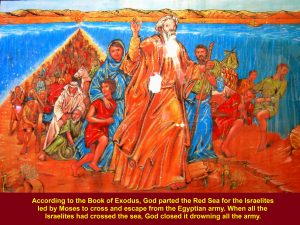
Moses leading Israelites and crossing the Red Sea parted by God to escape from the ancient Egyptian army, according to the Book of Exodus.
Tour group stopped at Elim which is 100 km south-east of Suez to see one of the 12 Moses’ wells in the oasis.
The Israelites led by Moses stopped and camped at the well for a short while before they continued their journey to the promised land, according to the Book of Exodus.

One of 12 Moses’ wells in Elim where the Israelites led by Moses stopped and camped there for a while
Unoccupied Houses
On the journey in northern Sinai Peninsula, we noticed many houses were unoccupied by civilians. It was due to Sinai insurgency between the Islamist militants and the Egyptian security forces. Besides, the civilians were afraid of being attacked by the militants.
Unoccupied houses by civilians along highways in northern Sinai Peninsula

Unoccupied houses by civilians along highways in northern Sinai Peninsula due to Sinai insurgency, and civilian attacks by the militants
Lunch at Moon Beach Resort Restaurant, Ras Sudr
Tour group stopped at Moon Beach Resort Restaurant, Ras Sudr, for lunch after travelling 226 km by road from Cairo.

Tour group stopping at Moon Beach Resort Restaurant, Ras Sudr. for lunch after travelling 226 km by road from Cairo
Lunch in dining hall of Moon Beach Restaurant, Ras Sudr
Calm Red Sea and quiet beach of Moon Beach Resort, Ras Sudr, Sinai Peninsula, Egypt
Leaving Ras Sudr after lunch
After lunch we left Ras Sudr and travelled another 200 km to St. Catherine. But two hours later, we stopped at a roadside cafe for tea-break.
Tea-break at a roadside cafe.
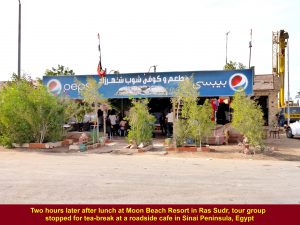
Tour group stopping at a roadside cafe for tea-break after having lunch at Ras Sudr about two hours ago
Tour group relaxing at a roadside cafe for a short while before they continued their journey to St. Catherine in the south.
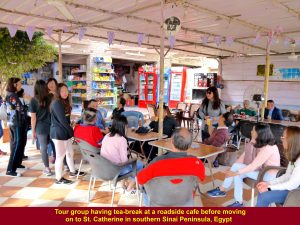
Tour group having a drink and relaxing at the roadside cafe before going to St. Catherine in the south
Egypt-Israel Peace Treaty(1979)
Sinai Peninsula was occupied by the Israeli forces from 1967 until 1982. It was returned to Egypt in 1982 although the Peace Treaty between them was signed in 1979.
Sinai Peninsula was occupied by Israeli forces from 1967 until 1982.
Arrival at St. Catherine
After a long journey from Cairo via the Suez tunnel, we finally reached St. Catherine in Sinai Peninsula. We had travelled a total distance of abou 440 km on the road from Cairo to St. Catherine during the whole day.
We would stay at a hotel, Morgenland Hotel, for a night. But some of us would leave the place after midnight and travelled 6.7 km to the foot of a mountain, Mount Sinai, which is 2285 metres above sea-level and then climbed up the mountain to its peak in pitch-darkness.
A large billboard welcoming visitors to St. Catherine in South Sinai Peninsula, Egypt
Tour group resting at Morgenland Hotel at St. Catherine before climbing Mount Sinai(2285 metres) after midnight.
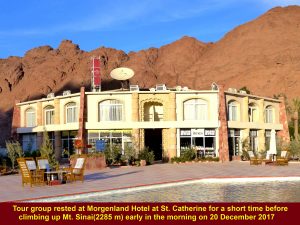
Tour group resting at Morgenland Hotel at St. Catherine before climbing Mount Sinai(2285 metres) which is 6.7 km away after midnight
Writer and wife at Morgenland Hotel, St. Catherine, on 19 Dec 2017
Moses received the Ten Commandments on Mt. Sinai
According to the Book of Exodus, Moses went up Mt. Sinai to receive two tablets of stone inscribed with the God’s Ten Commandments.
Mount Sinai, a tourists’ popular site

Mt. Sinai attracts tourists as, according to the Book of Exodus, Moses had gone up to receive two tablets of stone inscribed with the God’s Ten Commandments
Writer getting ready to climb Mt. Sinai with other tour members after midnight on 20 Dec 2017
(Continue in Egypt Travel Part IX)
Egypt Travel Parts I to XII
Egypt Travel Part I :Salah el Din Citadel, Muhammad Ali Mosque, Tahrir Square and Egyptian Museum
Egypt Travel Part II :Valley of the Kings, Hatshepsut Temple and Colossi of Memnon
Egypt Travel Part III :Hot Air Balloons and Karnak Temple Complex
Egypt Travel Part IV :Papyrus Paper-Making, Luxor Temple and Esna Lock
Egypt Travel Part V :Edfu Temple, Kom Ombo Temple and Galabia Party
Egypt Travel Part VI :Abu Simbel Temples and Nubian Village(Elephantine Island)
Egypt Travel Part VII :Unfinished Obelisk, Aswan High Dam and Philae Temple
Egypt Travel Part VIII:Ahmed Hamdi Tunnel, Moon Beach(Ras Sudr), and St. Catherine
Egypt Travel Part IX :Mount Sinai, Catherine’s Monastery and Sharm el Sheikh
Egypt Travel Part X :Sharm el Sheikh
Egypt Travel Part XI :Cairo Food, Saqqara Step Pyramid Complex and Memphis
Egypt Travel Part XII :Great Giza Pyramid Complex and Khan el Khalil Bazaar
Egypt Travel Part IX: Mount Sinai, St. Catherine’s Monastery and Sharm el Sheikh
Egypt Travel Part IX: Mount Sinai, St. Catherine’s Monastery and Sharm el Sheikh
Day 8 Wednesday, 20 December 2017
Map showing the location of Mount Sinai near St. Catherine’s Monastery in south Sinai Peninsula, Egypt

Map showing the location of Mount Sinai near St. Catherine’s Monastery in south Sinai Peninsula, Egypt
Mt. Sinai Climb
It was at 1 a.m. on 20 Dec 2017 that we started the climb to the top of Mt. Sinai in St. Catherine, Sinai Peninsula, Egypt. The mountain was 2282 metres above sea-level.
Tour members starting the Mt. Sinai climb in St. Catherine at 1 a.m. on 20 Dec 2017
Moonless Night
The lower mountain path was lit for a hundred metres then headlamps or torchlights had to be used to see the stony path to the summit in pitch darkness on the moonless night. The climb was easy at the beginning but later it was tough as the mountain guide allowed us a two-minute rest at each stop.
Resting at a Shelter
After two hours of climbing(3 a.m.), three of us including my brother gave up and rested at a shelter while the rest continued the climb to the summit of Mt. Sinai.
Colourful Sunlight
At about 5.0o a.m. I stood outside the shelter and was fascinated to see the colourful sunlight appearing on the eastern horizon.
Colourful sunlight at 5 a.m.
Bright Yellow Sun
Later at 5.40 a.m., I saw the bright yellow sun peeping out of the horizon. Soon the whole surrounding was brightened up.

The sun appearing on the horizon at 5.40 a.m. on 20 Dec 2017 as seen from the rest shelter on Mt. Sinai
Bright Morning
When the morning was bright, I could see the stone-shelter where we rested earlier and the summit of Mt. Sinai in the distance, clearly. But those who went up to the summit had not come down yet.
Stone-shelter and Mt. Sinai in the morning

Writer at the rest shelter waiting for his tour members to return from the summit of Mt. Sinai(2285 metres above sea-level)
Friendly cafe owner
The owner of the shelter-cafe was a friendly Egyptian. He had been serving climbers for several years.
Arrival of Tour-Members
At about 6.20 a.m. the rest of the climbers arrived at the shelter but did not stop there. So three of us who had remained at the shelter overnight followed them down the mountain. They told us that when they reached the summit it was still dark, but the mountain guide told them that they could not wait there to see the sunrise. He was told by our Egyptian tour-guide, Khaled, to descend immediately as we had to visit St. Catherine’s Monastery which would close at 12 noon.
Disappointment
The successful climbers felt disappointed and had to go down the mountain. But, fortunately, they did see the sunrise later as they were descending.
Tour members arriving at the shelter at 6.20 a.m. on 20 Dec 2017
Peter Lim and his happy family posing for a photo at the shelter.
Tour members descending Mt. Sinai in the morning on 20 Dec 2017
Tour members taking a long journey down Mt. Sinai
Book of Exodus
According to the Book of Exodus, Moses went up to the summit to receive the Ten Commandments from God.On
Chapel and Mosque on Summit
On the summit of Mt. Sinai the climbers saw an Orthodox Chapel of the Holy Trinity which was built in 1934 on ruins of a 4th. Century Byzantine church and a 12th. Century mosque nearby.
Summit of Mt. Sinai
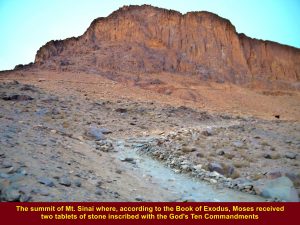
According to the Book of Exodus, Moses went up to the Mt. Sinai summit to receive the Ten Commandments from God
A painting showing Moses receiving two tablets of stone inscribed with the God’s Ten Commandments.

Moses on the Mi. Sinai summit receiving two tablets of stone inscribed with the God’s Ten Commandments, according to the Book of Exodus
Painting showing Moses with the Ten Commandments descending Mt. Sinai
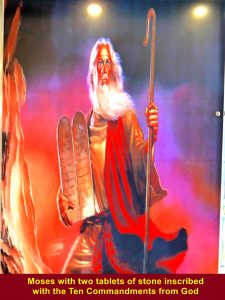
Moses with two tablets of stone inscribed with the Ten Commandments descending Mount Sinai to see his people
Visiting St. Catherine’s Monastery
After the mountain climb, we returned to our hotel, Morgenland Hotel, took a quick bath and breakfast, and packed our luggage getting ready to go to St. Catherine’s Monastery which was 10 km away. Then our coach brought us to a place where we took a van-taxi that took us to the monastery, a km away.
Tour group stopping at a place to take a van-taxi to St. Catherine’s Monastery, a km away

After the Mt. Sinai climb, we were brought by our coach to a place near the St. Catherine’s Monastery that is 10 km from Morgenland Hotel
A km-ride to the monastery by van-taxi
About St. Catherine’s Monastery
St. Catherine’s Monastery located at the foot of Mt. Sinai was built by the order of a Byzantine emperor, Justinian I, in the 6th. Century A.D.. It has become a sacred place for pilgrimage.

St. Catherine’s Monastery was built by order of Justinian I, a Byzantine emperor in the 6th. Century A.D.
The Monastery’s Treasure
St. Catherine’s Monastery houses a treasure trove of icons and manuscripts. It is surrounded by high thick walls with small entrance and windows to prevent it from being attacked by unknown people.
6th. Century Monastery
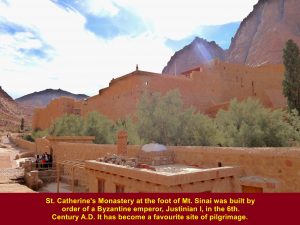
St. Catherine’s Monastery was built order of a Byzantine emperor, Justinian I, in the 6th. Century A.D.
Main Entrance of Monastery
Monastery’s Compound
High and Thick Wall surrounding the Monastery
Orthodox Church where no photographing was allowed inside

Tour group entering an orthodox church on the left. Visitors were not allowed to take photos inside.
Moses’ Well where Moses met his wife, Zipporah

Moses’ Well, the place where Moses met his wife, Zipporah, who was one of the 7 daughters of Jethro, according to the Book of Exodus
“Burning Bush”
“Burning Bush” in the Monastery garden from which God first revealed himself to Prophet Moses, according to the Book of Exodus
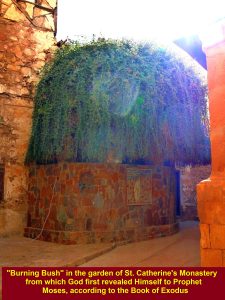
“Burning Bush: in the garden of the monastery from which God first revealed Himself to Prophet Moses, according to the Book of Exodus
Group tour photo at St. Catherine’s Monastery on 20 Dec 2017
St. Catherine’s Legend
According to legend, Catherine was a Christian martyr from Alexandria. She was sentenced to death on the breaking wheel that was supposed to kill her. Since it failed, she was beheaded. Later angels took her body to Mount Sinai. In around 800 A.D. monks from the monastery found her body and kept her in the Orthodox church. Thus. the monastery was named after her.
Mosque at St. Catherine’s Monastery
There is a mosque behind the Bell Tower at St. Catherine’s Monastery. Originally, it was built as a hospice for Christian pilgrims. Then in 1106 it was converted to that mosque for the use of local Bedouins , some of them were working for the monastery. It is still in use today.
A mosque at St. Catherine Monastery

Building behind Bell Tower was converted to a mosque for the use of the local Bedouins in 1106, some working for the monastery.
Travelling south to Sharm el Sheikh
In the late afternoon on 20 Dec 2017, we left St. Catherine’s Monastery and headed south to a famous coastal tourist town in Egypt, Sharm el Sheikh. On arrival we checked in at a well-known hotel, Maritim Jolie Ville Golf and Resort.
Map showing the southern part of Sinai Peninsula
Maritim Jolie Ville Golf & Resort, Sharm el Sheikh
A lovely resort that has many facilities, like swimming pools, tennis courts, 18-hole golf course, over 300 rooms, beach for swimming in the Red Sea, restaurant, bar, etc..

Tour group stayed for two nights at Maritim Jolie Ville Golf & Resort in Sharm el Sheikh on 20-21 Dec 2017
Fresh water and sea-water swimming pools at the resort
Beach for swimming in the clear water of the Red Sea

Writer and wife relaxing at Maritim Jolie Golf Ville and Resort, Sharm el Sheikh, Sinai Peninsula, Egypt
Resting at Resort
We stayed at that resort for that night and would go to Naama Bay for a submarine ride to see marine life in the bay on the following day, 21 Dec 2017.
(Continue in Egypt Travel Part X)
Egypt Travel Parts I to XII
Egypt Travel Part I :Salah el Din Citadel, Muhammad Ali Mosque, Tahrir Square and Egyptian Museum
Egypt Travel Part II :Valley of the Kings, Hatshepsut Temple and Colossi of Memnon
Egypt Travel Part III :Hot Air Balloons and Karnak Temple Complex
Egypt Travel Part IV :Papyrus Paper-Making, Luxor Temple and Esna Lock
Egypt Travel Part V :Edfu Temple, Kom Ombo Temple and Galabia Party
Egypt Travel Part VI :Abu Simbel Temples and Nubian Village(Elephantine Island)
Egypt Travel Part VII :Unfinished Obelisk, Aswan High Dam and Philae Temple
Egypt Travel Part VIII:Ahmed Hamdi Tunnel, Moon Beach(Ras Sudr), and St. Catherine
Egypt Travel Part IX :Mount Sinai, Catherine’s Monastery and Sharm el Sheikh
Egypt Travel Part X :Sharm el Sheikh
Egypt Travel Part XI :Cairo Food, Saqqara Step Pyramid Complex and Memphis
Egypt Travel Part XII :Great Giza Pyramid Complex and Khan el Khalil Bazaar
Egypt Travel Part X: Sharm el Sheikh, Naama Bay, Submarine Ride, Old Market, Sahaba Mosque
Egypt Travel Part X: Sharm el Sheikh, Naama Bay, Submarine Ride, Old Market, Sahaba Mosque
Day 9 Thursday, 21 December 2017
Naama Bay, Sharm el Sheikh, Sinai Peninsula
On the second day at Sharm el Sheikh, we left Maritim Jolie Golf Ville and Resort and went to Naama Bay which was a few km from the resort. We were going to be in a moving submarine to see marine life in the bay.
Map showing the location of Sharm el Sheikh
Bill-board advertising submarine service
When we arrived at the Naama Bay, we saw a large bill-board advertising the submarinc service.
Submarine service at Naama Bay, Sharm el Sheikh
Tour members were briefed about the marine life in Naama Bay by a submarine company worker before entering a submarine.
A submarine jetty at Naama Bay, Sharm el Sheikh
Clear, blue water in Naama Bay, Sharm el Sheikh
Submarines waiting for tourists to board at Naama Bay jetty
More tourist submarines
A submarine with tourists moving to the deep water of Naama Bay
Writer and wife relaxing on a submarine before it started to move
Parasailing is one of the tourists’ activities at Naama Bay
“Banana” ride is another tourist activity at Naama Bay
Tour members inside the moving submarine were fascinated by marine fish swimming about, plants and corals in the water.
Corals, marine plants and fish are plenty in Naama Bay, Sharm el Sheikh, Sinai Peninsula
Large and small fish of diverse kinds in Naama Bay
Old Market in Sharm el Sheikh
After the interesting and exciting submarine ride in Naama Bay, we went to the Old Market of Sharm el Sheikh which was about two km from Naama Bay.
Variety of Shops
It is a well-planned town with shops of many kinds that sell things ranging from daily necessities, foods, beverages to jewellery and electrical goods.

Old Market in Sharm el Sheikh has all kinds of shops like restaurants, groceries, art galleries, etc.
Writer’s wife at Old Market of Sharm el Sheikh on the sunny day.
A street of shops at Old Market, Sharm el Sheikh
Old Market Bazaar, Sharm el Sheikh
Sahaba Mosque
The largest and most prominent building at Old Market is a mosque, Sahaba Mosque, built in Ottoman architectural style in 2011.
Back to Resort for Dinner
In the evening we left Old Market and went back to our resort, Maritim Jolie Golf Ville and Resort, to have dinner. We stayed one more night there as we would fly back to Cairo from Sharm el Sheikh on the following morning on 22 Dec 2017.
(Continue in Egypt Travel Part XI)
Egypt Travel Parts I to XII
Egypt Travel Part I :Salah el Din Citadel, Muhammad Ali Mosque, Tahrir Square and Egyptian Museum
Egypt Travel Part II :Valley of the Kings, Hatshepsut Temple and Colossi of Memnon
Egypt Travel Part III :Hot Air Balloons and Karnak Temple Complex
Egypt Travel Part IV :Papyrus Paper-Making, Luxor Temple and Esna Lock
Egypt Travel Part V :Edfu Temple, Kom Ombo Temple and Galabia Party
Egypt Travel Part VI :Abu Simbel Temples and Nubian Village(Elephantine Island)
Egypt Travel Part VII :Unfinished Obelisk, Aswan High Dam and Philae Temple
Egypt Travel Part VIII:Ahmed Hamdi Tunnel, Moon Beach(Ras Sudr), and St. Catherine
Egypt Travel Part IX :Mount Sinai, Catherine’s Monastery and Sharm el Sheikh
Egypt Travel Part X :Sharm el Sheikh
Egypt Travel Part XI :Cairo Food, Saqqara Step Pyramid Complex and Memphis
Egypt Travel Part XII :Great Giza Pyramid Complex and Khan el Khalil Bazaar


